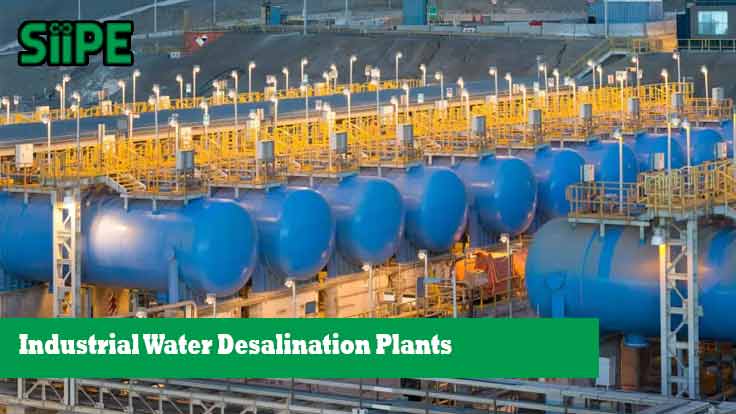Water scarcity is one of the most pressing global challenges, particularly for industries that rely heavily on large volumes of water for their operations. From energy generation to chemical manufacturing, access to fresh water is critical. Industrial water desalination plants have emerged as a reliable solution, providing industries with sustainable access to clean water by converting seawater and brackish water into potable or process-grade water.
This article explores the importance, technology, benefits, and challenges of industrial desalination plants while highlighting their role in building a sustainable industrial future.
What Are Industrial Water Desalination Plants?
Industrial water desalination plants are large-scale facilities that remove salts and other impurities from seawater or brackish water to make it suitable for industrial use. Unlike municipal desalination plants, which focus on drinking water, industrial plants often tailor water quality to meet specific production requirements.
Industries such as power generation, petrochemicals, mining, pharmaceuticals, and textiles use desalinated water for:
-
Boiler feedwater
-
Cooling systems
-
Process water
-
High-purity water for sensitive operations
The Importance of Desalination in Industry
1. Addressing Water Scarcity
Many industrial zones are located in arid or coastal areas where freshwater resources are limited. Desalination ensures continuous operations even in regions with minimal rainfall or depleted groundwater reserves.
2. Supporting Industrial Growth
As industries expand, their demand for water grows significantly. Industrial desalination plants provide a stable water supply that supports growth without straining natural freshwater resources.
3. Enhancing Sustainability
By reducing dependence on rivers and aquifers, desalination helps preserve ecosystems and promotes sustainable industrial development.
Key Technologies in Industrial Desalination
Reverse Osmosis (RO)
RO is the most widely used technology. It forces seawater through semi-permeable membranes, removing up to 99% of dissolved salts. Industries prefer RO for its efficiency and modular scalability.
Multi-Stage Flash (MSF) Distillation
This thermal method involves heating seawater and condensing the vapor. While energy-intensive, it produces very high-quality water and is suitable for power plants with access to waste heat.
Electrodialysis (ED)
Used mainly for brackish water, ED relies on electrical potential to move salts through ion-exchange membranes. It’s efficient for medium-salinity water sources.
Benefits of Industrial Water Desalination Plants
-
Reliable Water Supply – Ensures industries have consistent water availability regardless of local shortages.
-
Customizable Water Quality – Water can be treated to meet specific industrial standards.
-
Support for Remote Locations – Industries operating in deserts or islands benefit from desalination as their primary water source.
-
Long-Term Cost Savings – While initial investments are high, stable water supply reduces operational risks and downtime.
-
Environmental Preservation – Decreases pressure on freshwater ecosystems and groundwater reserves.
Challenges and Considerations
Despite their advantages, desalination plants face certain challenges:
-
High Energy Consumption – RO and thermal methods require substantial energy, increasing operational costs.
-
Brine Disposal – Concentrated saline discharge can impact marine ecosystems if not managed properly.
-
Capital Investment – Initial setup costs are high, requiring careful financial planning.
-
Technological Maintenance – Membranes and other components require regular maintenance to ensure efficiency.
Innovations in Industrial Desalination
To address challenges, industries are adopting innovative approaches such as:
-
Renewable-Powered Desalination – Using solar or wind energy to reduce carbon footprint.
-
Zero Liquid Discharge (ZLD) Systems – Recovering nearly all water and minimizing brine waste.
-
Hybrid Systems – Combining RO with distillation for higher efficiency.
-
Smart Monitoring Systems – Using AI and IoT for predictive maintenance and optimization.
Industrial Applications of Desalination
-
Power Plants – Desalinated water is essential for steam generation and cooling systems.
-
Oil & Gas Industry – Provides process water for refineries and offshore platforms.
-
Mining Sector – Supplies water for mineral processing and dust control.
-
Pharmaceuticals – Produces ultra-pure water required for drug manufacturing.
-
Food & Beverage – Ensures high-quality water for processing and cleaning.
The Future of Industrial Desalination
As industries move towards sustainability, desalination will play an even greater role. With advancements in membrane technology, energy recovery devices, and integration with renewable energy, industrial desalination plants are expected to become more efficient and environmentally friendly.
Governments and private companies are also investing in research and public-private partnerships to make desalination more affordable and accessible.
Conclusion
Industrial water desalination plants are more than just a technological solution—they are a strategic necessity for industries facing water scarcity. By ensuring a reliable, high-quality water supply, desalination supports industrial growth, sustainability, and resilience. Despite challenges, ongoing innovations promise a future where desalination is both cost-effective and eco-friendly, making it a cornerstone of sustainable industrial development.











